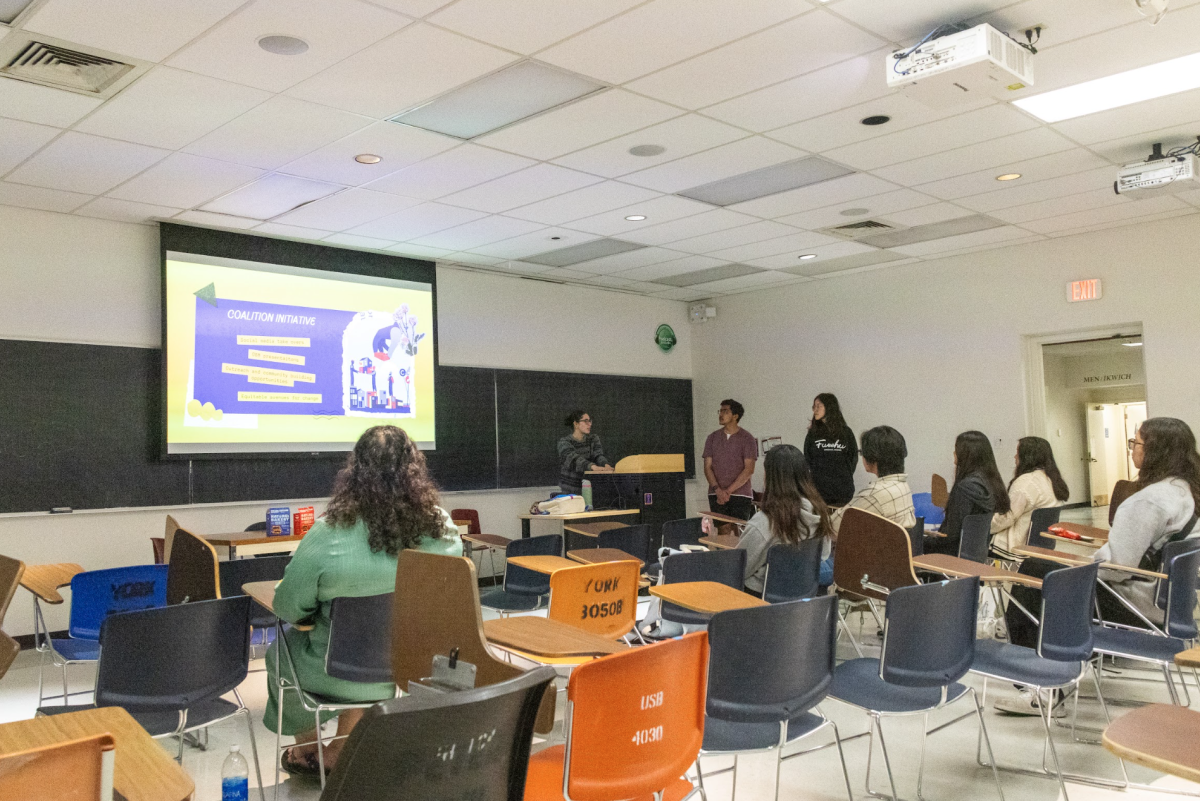Robert James Stevenson loves Harry Potter books, ice cream sundaes and pizza. Like nearly all 5-year-old children, he loves to play games with his friends, go the beach and spend time with his family. He has a doting mother and two older sisters, and at first glance, he seems just like any ordinary young child.
But one year ago, Robert became a national statistic that would horrify the average American. Last year, like more than 750,000 other people in the United States, Robert and his mother, Pat, were homeless.
In October 2000, Robert’s father, a British citizen who was residing illegally in the United States, was picked up by local immigration authorities and deported back to his homeland.
Pat, a 43-year-old who was trying to care for Robert and two daughters from a previous marriage, knew that her family needed help. It was then that a social worker directed Pat toward the St. Vincent de Paul’s shelter.
St. Vincent de Paul Village is one of seven facilities, each known as one of Father Joe’s Villages. Led by Catholic priest Joe Carroll, it is a large, transitional facility in downtown San Diego and is currently home to more than 865 residents, 163 of whom are children.
What began as a small operation in 1950, consisting of volunteers who handed out peanut butter sandwiches to the homeless, has become an extensive facility that houses not only hundreds of residents, but several programs and services, all of which are dedicated to providing the homeless with resources that they would not otherwise have access to.
While the facility prides itself on the structure and stability that it provides to its inhabitants, those who reside at St. Vincent’s benefit from the numerous services that the organization offers.
These services include an assessment center, where clients receive individual case plans for educational competency and vocational testing. St. Vincent’s also provides case management programs where long-term residents are paired up with a case manager who helps them with setting goals, monitoring finances, achieving tasks, vocational adult education programs, English as a Second Language, dyslexia, budgeting, computer, writing, career counseling, employment programs, psychological counseling services and chemical dependency programs There are several other programs designed to assist homeless individuals and families in the quest to regain stability.
In addition to these resources, St. Vincent’s provides nearly 4,000 meals to both residents and nonresidents each day.
The intermediary facility has two options available to those in need. As participants of the short-term program, individuals can stay at St. Vincent’s for up to 90 days free of charge. In the long-term program, residents can stay at the shelter for up to two years, and are required to commit themselves to a structured lifestyle and participate in certain courses like the case management program.
St. Vincent’s also assists residents of the long-term program in obtaining employment and helps them to pursue higher education. All residents who are on the long-term track must use one-third of their income to pay rent and must place another one-third in a savings account. The remaining portion of their income may be used toward personal expenses and serves as spending money.
Mark Tsuchiya, a spokesperson for St. Vincent de Paul Village, is confident that the individuals being provided for by this organization benefit from the strict rules governing their stay at the facility.
“”We try and instill a sense of responsibility in our residents,”” Tsuchiya said. “”Everyone has to pay rent, and our long-term residents are no exception. The result of this is that when they get back on their feet and go back into the real world, they are better prepared.””
Trina Poore, who is in the short-term program, came to St. Vincent’s because she had nowhere else to go. One year ago she was living in her Imperial Beach apartment with her three children, ages nine to 11, when her landlord raised the rent. She was in the process of taking the rent increase to court when her apartment was robbed: She lost her entire savings.
With no way to pay the rent, Poore was not only bankrupt, she had no place to go; she was not in direct contact with her husband and had no one to depend on.
She called Infoline, an informational number that helps connect the homeless with emergency food and shelter services. The operator at Infoline directed her toward St. Vincent’s, where she and her children enrolled in the Overflow Program. Through this program, Poore and her children were able to sleep at the shelter — usually on mats in the dining room — but during the daytime, they had to leave the property. From there, the family was chosen to go to the seasonal shelter until being transferred to St. Vincent’s.
While Poore, who has epilepsy and Ortho-Arthritis, had a number of jobs prior to arriving at the shelter, she told of her difficulties in obtaining employment because of her disability and financial state. Although she has tried numerous times to maintain a steady job, she has had little success and has no choice but to depend on acquiring Social Security Income in order to provide for herself and her three young children.
“”My biggest challenge is finding a job,”” Poore said. “”Unfortunately, no one seems to want to hire a disabled person, and no amount of qualifications is going to change that.””
Poore, who enjoys baking and dreams of pursuing a career in culinary arts, feels that her experience at St. Vincent’s has made her more independent and has helped her to pursue her goals.
“”After coming to St. Vincent’s, I have much more confidence in myself,”” Poore claimed. “”I know that I can now make it by myself with my children and that I don’t have to depend on my husband. I have learned that I can be successful without him if I need to.””
Through St. Vincent’s, Poore has been able to attain legal assistance in order to pursue SSI. In addition, she has been able to enroll her children in reputable schools in the San Diego area and is currently saving money for renting a new apartment. According to Poore, the support of her children has contributed to the strengthening of her relationship with them.
“”When we initially arrived here, they used to say to me, ‘Mom, why do we have to be here?’ and I had to explain our situation to them, even though they were not happy to be here,”” Poore said. “”Now they seem more understanding of our situation, and they have learned to accept it as reality.””
Bernie Mills, the residential services manager at St. Vincent de Paul’s Village, promotes the several services offered by the organization.
“”When clients come in, they are directed to go into programs and services right away,”” Mills said. “”One of these programs is the ‘Challenge to Change’: a three-week, five-days-a-week course that gives our clients thoughts and ideas in terms of what they need to do to make the changes available in their life. It is a motivational seminar, and it gives them direction in terms of what exactly it is they might want to do while they are here.””
In addition to these programs, St. Vincent’s also provides a children’s services program. Through this program, residents who work during the day are provided with free on-site child care. Mills stresses St. Vincent’s commitment to bettering the lives of its residents.
“”One of the most rewarding things about working here is the client contact,”” Mills stated. “”Nothing beats the feeling of knowing that you can make a decision that affects someone’s life in a positive way.””
Perhaps the most sobering of stories is that of Laura Rubio, who came to St. Vincent’s in June 2001 and entered the long-term program in October. Rubio, who has seven children, ages three to 16, was left homeless in 1999. With no money, no place to call home and a severe drug and alcohol addiction, Rubio’s children were taken by Child Protective Services and placed into foster care.
She claims that she was in denial about her situation and was not ready for her situation to change.
“”Thank God there is St. Vincent’s,”” Rubio said. “”It is through their programs that I, as a recovering addict, have been able to understand my addiction, and I have learned how to prevent myself from venturing down the same destructive path.””
Rubio, who hopes to one day reunite with the children she left behind, credits her accomplishments to the shelter.
“”This place has given me stability and a formal way to get started again in my life,”” she said. “”When a person is homeless, it is very hard for them to even think about staying sober, especially if you are an addict or an alcoholic. The shelter has helped me to have a warm bed, three meals a day and to get my mind straight so that I am able to focus on things that I need to be aware of to go forward in my life.””
While there are several families that reside at St. Vincent’s, the majority of residents are single men and women who come to the facility to seek help for their financial and drug-related problems.
Mary Stephans, 32, first came to the shelter in May 2000 to get help for her drug addiction. After hearing about the program through her parents, Stephans decided to come to St. Vincent’s because she wanted to get her life back on track.
“”I really wanted to change and I wanted to grow up,”” Stephans said. “”I wanted to quit blaming other people for why I became homeless, for losing jobs and for my immature behavior.””
Stephans, whose husband currently has custody of their young child, attributed many of her successes at St. Vincent’s to the structure with which the organization has provided her.
“”I think the Challenge to Change program was very important to me, because prior to coming here, I did not see that my behavior was an impeding factor in my life,”” Stephans said. “”I’d just yell at people because that was my way of dealing with the problems I was having. They have rules here, and abiding by them has taught me the discipline that I will be able to use in the real world.””
For residents at St. Vincent de Paul’s, the fact that the facility is home to an on-site medical and dental clinic, a career and educational center and counseling services, among others, is a motivating factor for those who utilize these resources.
“”It’s important to recognize that a homeless person has no resources,”” said St. Vincent spokesperson Mark Tsuchiya. “”Father Joe set out to provide all of the necessary resources for these people, on-site, because this would be the only way for them to seek and receive the help that they are in need of.””
With the holidays coming up, St. Vincent’s has many festivities planned for its residents, including a traditional Thanksgiving meal and several Christmas-related activities. For children like Robert Stevenson, these activities have helped to sustain a sense of normalcy in the life of a young child who has experienced struggle first-hand.
While Robert has grown accustomed to his living situation, he still occasionally questions how long it will be before he and his mother will be able to claim a home of their own.
With a gleam in his eye and a bright smile on his face, Robert told his mother, “”Mommy, I want to move out. Can we leave this place? I want to live in a big house by the beach.”” His mother reassured him that his dreams of owning a home of their own will one day come true.
Stevenson recently found out that her soon-to-be-ex-husband had somehow snuck back into the country. Although it has been difficult for her to do, Stevenson has not let him interact with Robert.
“”He’s hurt his son enough and I really don’t need my son to get hurt anymore,”” Stevenson claimed. “”I’m not sorry at all that he’s not a part of our lives anymore because I have got a better life now, and I’m better off without him. I have a great relationship with my kids and that’s why I know that I am able to be independent and take care of my children rather than be dependent on him.””
Stevenson continued, “”While Robert doesn’t understand the situation completely, he is angry with his father because he knows that he let our family down.””
St. Vincent de Paul’s has aided thousands of people just like the Stevensons, and continues to provide a stable living environment for hundreds of men, women and children who are trying to pick up the pieces of their broken lives.
And so now, more than 50 years later, this shelter, which began with the small mission of feeding the hungry, has become a full-fledged transitional facility that caters to thousands of needy people each year.
The shelter, which is funded primarily by donations, has helped many San Diego citizens to gain employment, support their families and gain the financial and emotional independence that they so desperately needed. For Pat, there is at least some comfort to be gained in the fact that one of her two teenage daughters, who is currently living with Pat’s parents, received a four-year scholarship to whichever college she chooses to attend.
As a mother, Pat dreams of a bright future for her children, especially Robert.
“”I hope that my son learns from this, and I hope that he keeps his self-esteem up,”” Stevenson said. “”My son has known the hard part of life and he’s known a better part of life, and he seems to thrive more on the hard part. As he grows older, I hope that he does not look down on people who are in our situation. Children like him are the face of our country’s future, and I am confident that he will not judge people, but rather accept them for who they are.””







